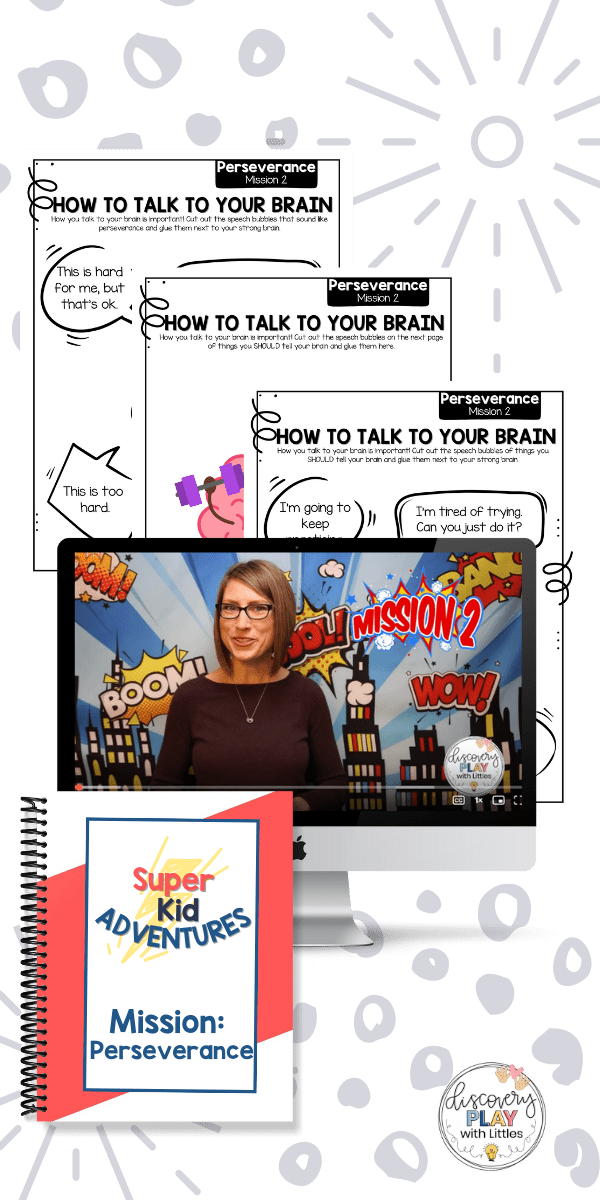I looked over and sighed. Adam was crying again. Bless his heart, I wondered what was wrong now. He seemed to spend a lot of his time in kindergarten in tears.
Today he was crying because he couldn’t find his pencil. He was looking for it…sort of. He raised his hand and told me he couldn’t find his pencil, so I told him he needed to try to solve that problem on his own first. Cue the tears.
Not only was he frustrated that he “couldn’t” find his pencil, but the kids at his table had also confused looks on their faces. What was the big deal?
At school, we always encouraged children to be as independent as possible. Our goal is to help teach them to problem solve and find solutions on their own. Kids who have had prior experience with problem-solving are often lightyears ahead of those who have had everything done for them.

Encourage Independence at Home by Doing These Things
When your child asks a question, respond with “What do you think?” or “You decide.”
Be sure to be ok with whatever they decide. Allow them to start making their own choices that make sense. For example “Would you like to wear the blue shirt or red shirt today? Do you want to run or hop to the car? Do you want to read one or two books before we have lunch? *Young children sometimes have difficulty when it comes to too many choices! In the beginning, limit the choices to two.
Help Children Verbalize Their Needs
You usually know what they want or need before they ask. Make them ask you anyway in a way that you understand. (Pronouncing words correctly, speaking clearly, in sentences that make sense.) At my job, I can’t just go up to my boss and hold out a paper and look at him. I must use words to explain what I’m thinking or wondering. Help teach this life skill by making them tell you what they want or need.

Are you tired of hearing “It’s TOO HARD!” followed by a meltdown?
Using this one simple phrase you’ll get in this powerful lesson, you’ll not only be able to help your kiddo not give up but you’ll:
>Activate their superpower of perseverance so that they can turn around a meltdown and keep trying
>Inspire them to use perseverance…even when it’s hard
>Teach them to recognize the warning signs of giving up, and how to turn it around by taking control of their choices.
Grab your powerful FREE video lesson to teach your kiddo one of the most powerful keys to perseverance.
Responsibilities at Home
- Leraning responsibility starts at home. Kids are always watching you and they want to help. Encourage kids to take initiative when something needs to be done just to do it.
- 2-3 Years Old
- Clear their plate from the table
- Help put groceries away
- Unload and put away silverware from the dishwasher (nothing sharp)
- Help set the table
- Put dirty clothes in their hamper
- Pick up and put away toys
- Check the newspaper and mail
- Feed pets
- Make bed (with assistance)
- 4-5 Years Old (all of the above, plus…)
- Make bed on their own
- Fold some laundry
- Clean bathroom sink with wipes
- Help cook dinner (activities based on ability)
- Empty small trashcans
- 6-8 Years Old (all of the above, plus…)
- Unload dishwasher
- Pack lunch for school
- Fold some laundry and put away
- Wash dishes
- Help with outdoor chores
- 2-3 Years Old

Free Time is Key
Our lives are so busy and we have many scheduled activities, we often forget the benefits of giving kids time that is unstructured. Allowing them to decide how and what to play will help build confidence in making decisions.
Frustration is a Learning Opportunity
When they don’t know what to do on their own, they learn problem-solving skills and the chance to do it themselves before an adult takes over. All that they learn when adults do it for them is that we can do it better than they can. Allowing them time to problem solve builds confidence and proves to them that they can solve the problem.
Go Slow and Do It Right
Make sure they slow down and do the job the right way! When they have to do it over so it is neat, they will take their time at school to make sure their work is correct.
Let Kids Do What They Can
My son was at the table today and wanted a fork to eat his kiwi. I was standing in the kitchen when he asked me for a fork. I responded with “that’s something you can get!” …and I let him do it. He knows where his silverware is. It’s good for him to stop relying on me for things he can do himself. As moms, we are in the habit of trying to meet everyone’s needs. It takes a bit of a mindset shift to stop meeting every request on-demand, and allow them to solve their own needs when they can.
Adam eventually figured out how to be more independent, although he struggled most of the year. After many phone calls with mom, a lot of intentional time at home, and a lot of one-on-one time at school, his problem-solving skills grew. Hopefully, by practicing these skills at home your kiddos kindergarten year will go more smoothly than Adam’s.
Want More?
If you liked this, you’ll love:
6 Simple Ways to Teach Responsibility for Kids
9 Activities to Teach Social Skills That You Will Actually Enjoy
7 Simple Ways to Teach Your Child Kindness
Your Turn
What are your favorite ways to teach independence?

